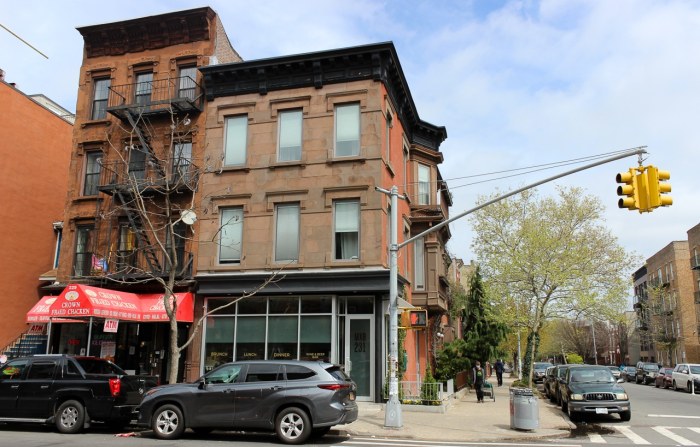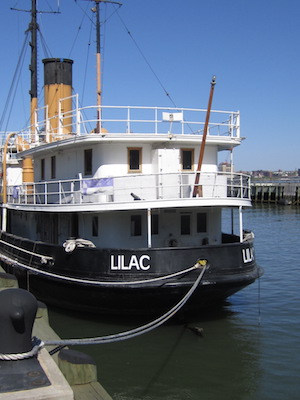
BY TRAV S.D. | New Yorkers pride themselves on their cosmopolitanism. There are a finite number of museums in this town; the notion of having “done them all” can be a tempting one. But I’ll lay dollars to donuts you’ve not been to the Lilac, where the exhibition “Adam Payne: Full Steam Ahead” is hanging through the end of September.
Open since 2011, the Lilac is one of New York’s newer and lesser-known museums. Its relatively low profile among the cognoscenti might have something to do with the fact that she is a US Coast Guard Cutter, moored at Hudson River Park’s Pier 25 near North Moore Street. For almost four decades (1933-1972), the Lilac served as a lighthouse tender along the Delaware River. Following her decommissioning, she served successive periods as a training vessel and the offices for a waterfront scrap business before being towed to New York and then acquired by the Lilac Preservation Project in 2004.
The last steam-powered lighthouse tender in America, the Lilac is listed on the National Register of Historic Places and is eligible to become a National Historic Landmark. The Lilac is open free of charge to the public for self-guided tours between May and October.
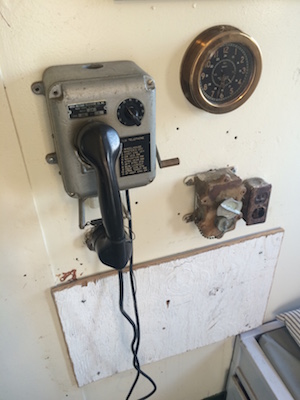
As a tourism experience, the Lilac is best suited for hardier visitors. It is a bit of an obstacle course, with a gangplank, uneven, shifting surfaces, and ladders to be negotiated. And the vessel is in the process of being restored. It is a rough and raw environment. But access to virtually all parts of this interesting ship is ample reward for the curious. Children and nautical buffs will especially appreciate the opportunity to stand at the ship’s wheel on the bridge, to make their way along the decks, and take in the engine room, galley, wardroom and cabins. A permanent exhibition tells the story of the ship’s history through historic photos and descriptive wall text.
Unlike most historic ship museums, the Lilac also doubles as an art gallery — a savvy innovation given its proximity to Tribeca and Chelsea. All of the exhibitions have some maritime connection. Recent exhibitions have included a collection of paintings by Rachel Lussier, and a photography show called “Defending New York Harbor.”
The current exhibition, “Adam Payne: Full Steam Ahead,” opened on Aug. 10. Payne is a conceptual artist whose work often consists of found objects (or “products”), which he reconceptualizes for the gallery space. “Full Steam Ahead” is described as “an exhibit of maritime art in mixed media” and consists of objects and documents with nautical associations, altered to bring out new meanings. The pieces are installed throughout the ship. Seeking them out carries with it something of the fun of a scavenger hunt, even when the significance of the art is quite serious.
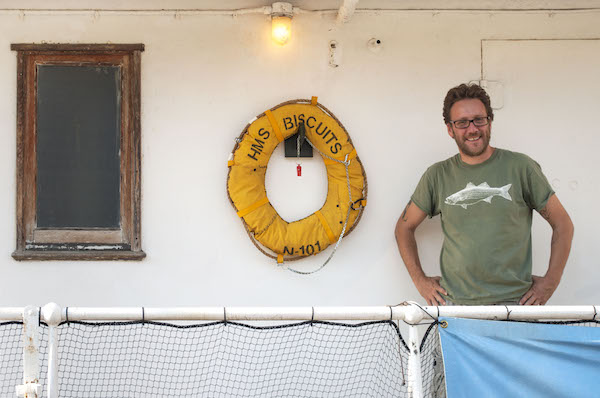
Most of the exhibition consists of a series of life vests and life preservers stenciled with the names of explorers and given thought provoking names, like “Nice Face,” “Milquetoast,” or “To Help Give Up The Ship.” The most ambitious of these (in scale) is an entire life raft hanging in the engine room, accompanied by a sound installation. In an ordinary art gallery, these works would inevitably evoke ships, sailing, and the sea. In the Lilac, the poignancy and drama are foregrounded. We are in a vulnerable place; these objects represent lives, both lost and saved.
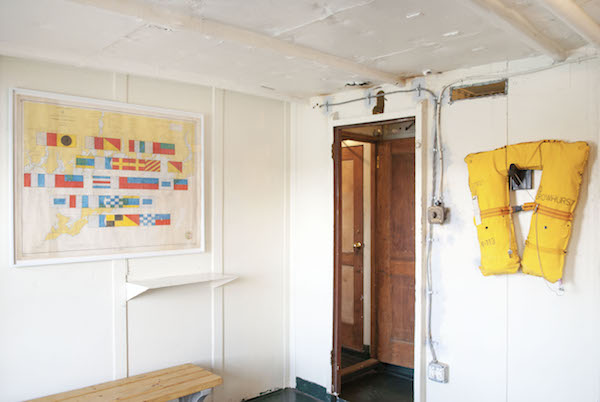
Other interesting pieces include a series of nautical maps with signal flag designs hand drawn over the top in colored pencil. The provocative title of one of these is “Hi Ho The Derry O The Cheese Stands Alone” (the song lyrics are spelled out in the work in the code of the maps). The result is a sort of bi-level semiotics. What does it mean as a message? And what does that message mean when presented as art? The fact that the lyric is nonsense, if anything, reinforces the question. But don’t think about it too hard! As I say, this is one gallery where you want to watch where you put your feet.
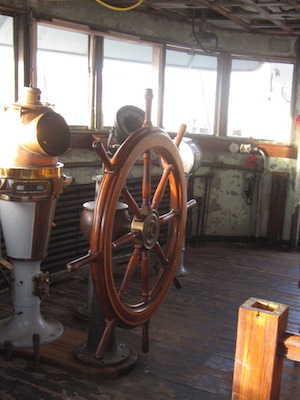
Says Payne, “Showing on the Lilac is a unique opportunity to interact with some of the history that has inspired these works. The Lilac’s work, servicing buoys and as a lighthouse tender, ensured lines of communication. Now the Lilac is used to help communicate with the past. Showing these works on this ship is a way to better understand nautical history and the individuals who made it.”
Admission to the Lilac is free. “Adam Payne: Full Steam Ahead” is on view through Sept. 29. Hours: Thurs., 4–7pm; Sat. & Sun., 2–7pm. At Hudson River Park’s Pier 25 (at N. Moore & West Sts.). Visit lilacpreservationproject.org.
















